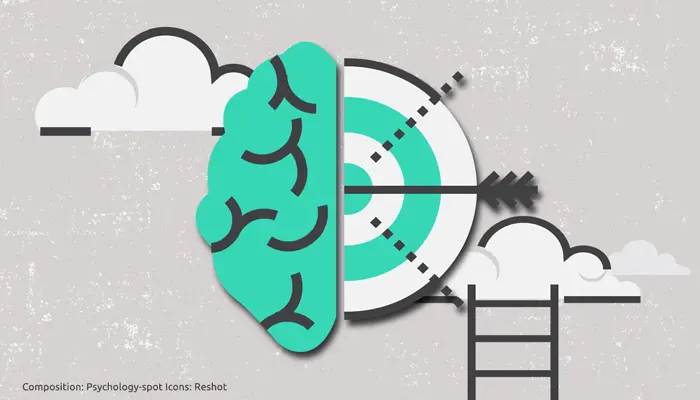
We tend to perceive each January as a new beginning, a turning point in our lives that gives us the opportunity to start over and correct some bad habits. Therefore, it is not strange that when another year arrives, we set new resolutions.
We decide to follow a healthier diet, exercise more, spend less, organize ourselves better, learn another language, quit smoking, change jobs… Unfortunately, most of those goals do not materialize. A study conducted at the University of Maryland revealed that 9 out of 10 people fail to keep their New Year’s resolutions.
Disappointment comes very soon, usually one or two months later. It is no coincidence that gyms receive a large influx of registrations in January only to lose a large part of those clients in February and March, as confirmed by experts.
However, this year it doesn’t have to be that way.
Psychological research has shown that willpower is not enough to achieve goals. Setting goals and achieving them is an endurance race in which we have to overcome internal and external obstacles, from the habits that push us to replicate old patterns to the temptations that arise along the way. Therefore, we need to prepare ourselves mentally to travel the path that will allow us to fulfill our New Year’s resolutions.
1. Granular objectives, the card up your sleeve to achieve your goals
Many of our desires do not come true because they are not really objectives but just good intentions. And, as such, they remain in the air. In other cases, the problem is that they are so ambitious or broad that they overwhelm us.
Psychologists Lauren Eskreis-Winkler and Angela Duckworth propose a simple solution: think of goals as a recipe. If the method of preparation and the amount of ingredients are not clear, it will be difficult for you to be motivated to prepare the dish. On the other hand, when everything is well explained step by step, you will not only be motivated to get to work, but you will also be more likely to achieve a good result.
In one of their studies, these researchers found that people who planned to volunteer 4 hours a week or 8 hours every two weeks, dedicated 8% more of their time to this activity than those who simply decided to volunteer 200 hours in general, without further details.
Setting more granular and time-bound goals will help you achieve your New Year’s resolutions. Divide them into more modest subgoals with specific deadlines that make it easier to establish the habit you need to form.
This way you will be able to better visualize the path and, above all, know where you are and how far you have to go. The possibility of monitoring progress will protect you against procrastination, reinforce your perception of self-efficacy and increase your level of commitment to goals.
2. Reset your goals so you don’t lose motivation halfway along the way
Setting achievable, specific and time-bound goals is just the first step. In 2012, psychologists Maferima Touré-Tillery and Ayelet Fishbach conducted a study in which they discovered that when we set a goal, we tend to take shortcuts. In one of their experiments, they asked participants to cut out five identical shapes.
At first, people carefully cut out the figure, but when they reached the third shape they became more careless. In the last one, they paid more attention again and the final quality improved.
The halfway effect refers to the loss of initial motivation and drive. During the first few days or weeks, you spend a lot of energy controlling yourself and resisting temptations, so it’s understandable that you end up psychologically drained and become more careless or complacent.
Additionally, the initial goal may begin to seem less attractive, distant, unattainable, or inconsequential. As a result, you may fall into a “slump” of sorts. When you’re right in the middle of the road, it’s harder to do things and do them well, so you’re more likely to throw in the towel.
The trick is to approach those intermediate phases differently. If looking forward makes you realize how far you are from your goal, it is better to look back to see everything you have achieved and fill yourself with confidence.
You can also set medium-term goals that you can continually renew to take advantage of the positive energy that characterizes the beginnings. For example, instead of aiming to lose 6 kilos in a year, you can aim to lose half a kilo each month. By “resetting” the goal and seeing each month as a new beginning, you can recharge your motivation.
3. Turn temptations into rewards to keep you going
Why go to the gym when you can rest at home or choose a salad if you can eat a pizza? Temptations, especially halfway through, can deviate you from the plan you had drawn up, causing your efforts to fail. For that reason, you probably see them as an enemy to avoid.
However, you could use them to your advantage to increase motivation. A study carried out at the University of Pennsylvania evaluated the impact of temptations on our behaviors. Some participants were seduced by the rewarding experiences and others delayed them to enjoy them as rewards for exercising.
The psychologists found that people who resisted temptations, turning them into small rewards for the effort made, exercised 55% more than those who belonged to the control group. 61% of those participants even decided to use them only as reinforcements when they carried out a monotonous activity that brought them closer to their goal.
Therefore, if you want to achieve your New Year’s resolutions, you need to be aware of the barriers that you will encounter along the way and not abuse your self-control because it is not an infinite resource. Instead, the ideal is to reward yourself from time to time to release emotional tension and recharge your batteries.
The secret is to condition these “temptations” to the habit you want to form, in this way you will kill two birds with one stone: you will feel more motivated to implement positive habits that require willpower and you will reduce the chances of falling into excessively indulgent activities of the which you may later regret.
In fact, this strategy is particularly effective for learning self-control because it takes advantage of the complementarity that exists between “desires” and “shoulds” to generate added psychological value. Basically, you can allow yourself to enjoy the rewarding activity, without going overboard, only when you take a step that brings you closer to your goal.
In general, the secret to meeting New Year’s resolutions is to have specific objectives, outline a clear strategy and use temptations as incentives. Remember that you can transform your habits and lifestyle by changing your circumstances and the way you think about and approach them.
References:
Milkman, K. L.; Duckworth, A. L. et. Al. (2023) A field experiment on subgoal framing to boost volunteering: The trade-off between goal granularity and flexibility. Journal of Applied Psychology; 108(4): 621–634.
Milkman K. L. et. Al. (2014) Holding the hunger games hostage at the gym: An evaluation of temptation bundling. Management Science; 60: 283–299.
Touré-Tillery, M., & Fishbach, A. (2012) The end justifies the means, but only in the middle. Journal of Experimental Psychology: General; 141(3): 570–583.
Locke, E. A., (1981) Goal setting and task performance: 1969–1980. Psychological Bulletin; 90(1): 125–152.



